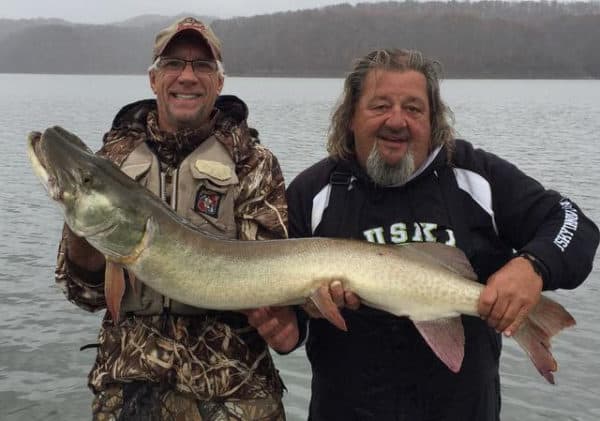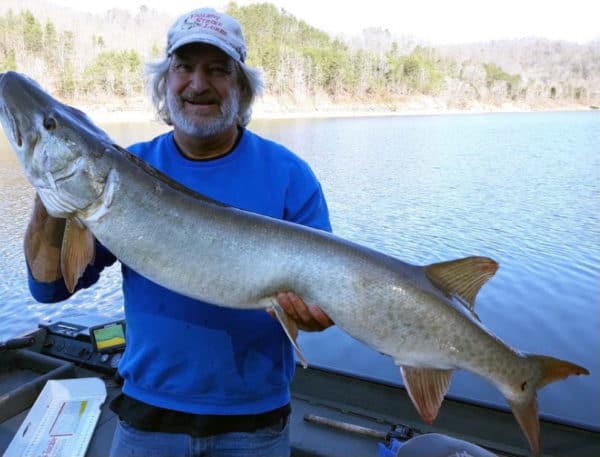100 Days Of Fall Musky Fishing
Category: article
Sep 13th, 2021 by Keith Worrall
Modified Sep 13th, 2021 at 11:51 AM

Experience 100 Days Of Fall Musky Fishing
As we approach late October, November and December, most musky anglers will have stored their boats, put away their lures and started planning next year’s strategies. However, many are not aware of the musky action kicking up south of the Mason-Dixon Line during the late fall period.
Southern waters offer a long fall season as mild temperatures last well into December. Anglers will find water temperatures ranging from 48 to above 60 degrees during this late season.
Shorter days and cooler water temperatures are contributing factors for the muskies’ heavy feeding habits. No matter where you fish, it’s well known that some of the heaviest muskies of the year will be captured during late fall.
A big benefit to late season musky fishing is the many ways by which they are taken — an almost endless number of different techniques can produce a season’s giant. Trolling is a common presentation during the late fall period; many veteran anglers from Kentucky to Canada drag baits using a slower trolling method, generally with larger, stand-out lures, and many times a little deeper depending on baitfish location.
Still, casting a bigger-profiled lure with a slower-paced retrieve has historically been effective for late season muskies. This is where large rubber baits earn their keep, but jerkbaits, gliders, as well as bucktails and topwaters can also prove productive. Casting anglers who can endure the harsh weather can target structure others may overlook, or simply can’t fish, while trolling.
Livebait presentations are another staple of fall musky fishing. “Soaking suckers” has taken many of the biggest fish of the year for decades. Techniques for using livebait for muskies have drastically improved over the years into modern tactics designed to work specific depth and structure, and ensure the longevity and action of livebait. Newer, lighter quick-strike rigs allow bait to move freely and provide for successful, stress-free release of muskies caught.
Like all areas, a massive cold front can hit, but normal temperatures generally return in a day or so. Still, it’s common to have terrific musky weather through December. Livebait, casting and trolling are all productive techniques that produce some of the biggest fish of the year in the South.
With prime time for giant muskies just around the corner, it’s time to finalize plans, create strategies and pack your boxes for what could be your best trip of the year. As musky fishing winds down in the North, the southern areas of the musky range have open seasons throughout the year’s end. Destinations in Kentucky, Tennessee, West Virginia and Virginia offer great late season action.
Take this opportunity to sneak in an extension of your season. Visit kymuskie.com or call 606-776-6567.



